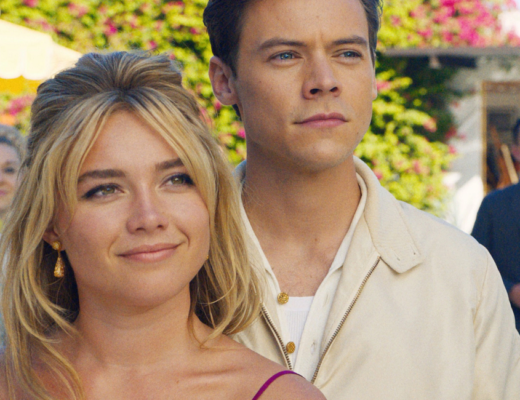Essential to success within the medium of cinema is, of course, a film’s visual character, supplementing and even re-characterizing any narrative core. Jonathan Demme’s recent Rachel Getting Married is one such example of a film completely transformed by its visual style, employing a shaky-cam and docudrama aesthetic to support its uncomfortable intimacy. That film is consistent and unrelenting in its aesthetic design, and perfectly imbues the movie with an improvisational quality. Elsewhere, David Lynch is famous for his striking visual mastery, as is Gus Van Sant, whose genius DP Harris Savides can make even a dull film quite interesting to look at. For a prime example of the inverse, look no further than last year’s Ron Howard-helmed Frost/Nixon, which haphazardly incorporates shaky-cam elements without any real purpose, uncomfortably meshing with standard Hollywood techniques; the jumble of stylistic tics that Howard uses makes it hard to focus on much of anything else.
Barry Jenkins’ debut, Medicine For Melancholy, like it or not, has to be considered with this conversation of visual style. Its stunning blacks, whites, and sepias underscore a beautiful story of two well-rounded and at times wonderfully unsympathetic individuals. The film is a simple love story of sorts, but the movie’s visual range, texture, and purpose elevate it far above the simple, as Jenkins makes the best of his low budget. The overall cost of equipment surely wasn’t too high, but this is to the filmmaker’s advantage; it naturally plays to the film’s realism, and that naturalistic ease makes it all the more difficult to believe that this is the first foray into feature-length cinema for most involved. Daily Show faux-reporter Wyatt Cenac and (relative) newcomer Tracey Heggins play two San Francisco residents in their mid-twenties (Micah and Jo’, respectively) who wake up in the same bed after a drunken one-night stand — they met at a party the night before. With a notable absence of pleasantries, Heggins and Cenac get dressed and head out into the San Francisco morning, proceeding to get a taxi and go their separate ways after an awkward brunch in a nearby café. But after Jo’ leaves, Micah finds her wallet on the floor of the taxi and sets out to return it to her. By knocking on doors in the neighborhood, he finally finds her, and the pair agree to start over, re-introducing themselves and building a relationship. Jo’ needs to run an errand; Micah agrees to give her some company, and they end up spending the whole day together. They talk, philosophize about race (in a funny sequence, they discuss “what two black folks do on a Sunday afternoon”) and evaluate where they are in their lives and friendships.
It’s all very Before Sunrise/Sunset, but, even though that pair of films is an obvious influence and inspiration for Jenkins (all three movies are additions to the one conversation/one day/one city subgenre), Medicine For Melancholy manages to rise above its touchstones and become something better and more singular. It’s tighter, better written and constructed, and infinitely more interesting in its dialogue than either Linklater film. Heggins, who’s the least experienced actor here, has a few rough scenes in the first half, but as the film progresses she finds traction emotionally and is affectingly heartbreaking in the film’s bittersweet final frames. Cenac is even better, nailing both the drama and comedy required of the role. The pair’s conversations seem completely improvised and intelligent, and the complex script is wonderfully varied, with intelligent consideration of racism in America; which, given this setup, might have been a tough sell without the talent of these actors. The film’s down-to-earth approach to material that could easily have been handled with more of a fairy tale inflection is respectful, sincere, and sweet, and it marks an exciting debut from a very promising filmmaker.







